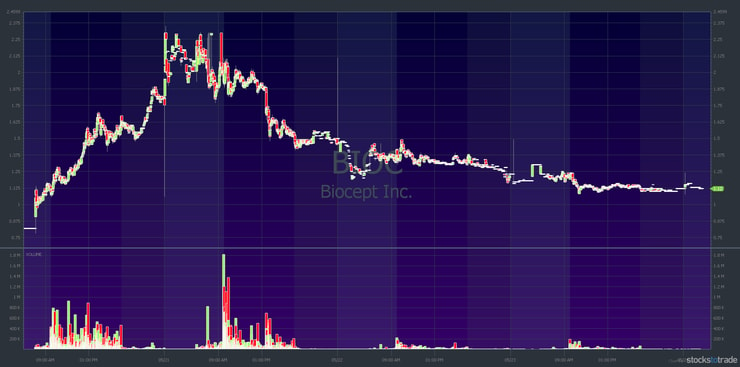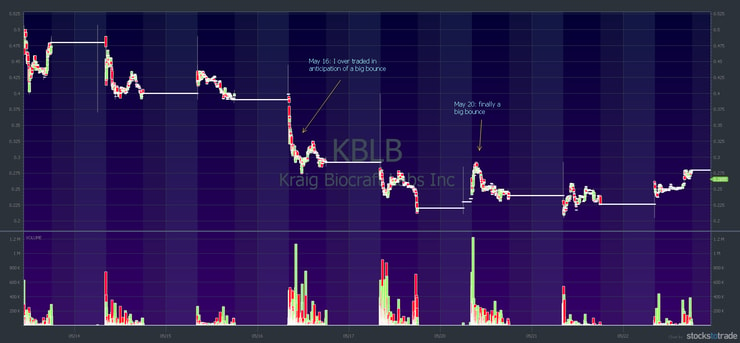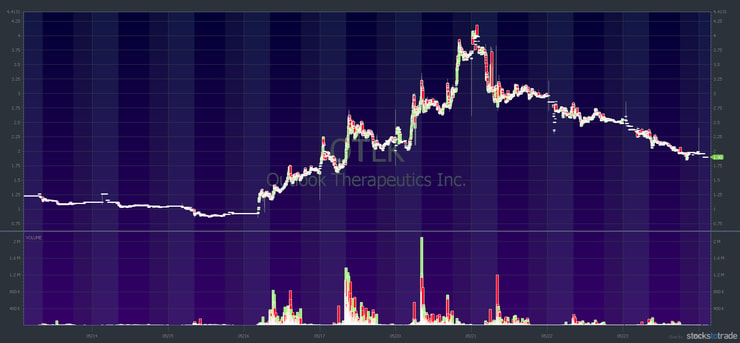As you can see in the picture below, I’m living the dream. It’s possible for me because I learned to trade penny stocks. I want you to live your dream life, so apply for the Trading Challenge today.
In my last update, I was in London for interviews. Then I made my way across Europe for several days…
Wanna live the dream? You MUST be determined & have patience…YOU CAN DO ANYTHING! pic.twitter.com/kkdKeF0WrF
— Timothy Sykes (@timothysykes) May 23, 2019
I just arrived in Japan. My charity Karamagawa is working on a bunch of partnerships.
I’ll have more information on our upcoming partnerships for you soon. In the meantime, head over to the Karmagawa website. Which charities do we donate to? Read more about them here.
By the way, if you order Karmagawa swag, take a picture of you wearing it and post it. Tag me and I’ll re-post. Let’s spread the word.
Our mission is to donate to charities and give them exposure. The charity world is highly regulated. If we were a traditional nonprofit, the scope of our projects and partnerships would be limited.
Karmagawa helps us grow our relationships with more brands and charities. We think it brings more value to the world in the long run. You’ll see what I mean when we release the Save the Reef documentary next month. Stay tuned.
Anyway, that’s why I’m here in Japan. Not to mention the fact that I love sushi.
Table of Contents
- 1 Traveling Trader Alert
- 2 Questions From Students
- 2.1 “Tim, when $KBLB started to tank, it was fascinating to watch some of your best students short while you were dip buying. Should we be trying to play both sides of a run — both long and short?”
- 2.2 “When you alerted your exit from $KBLB on May 16, you mentioned overtrading. At what point do you tell yourself it’s time to step away?”
- 2.3 “Tim, why are choppy stocks like $OTLK so difficult to play?”
- 3 Millionaire Mentor Market Wrap
Traveling Trader Alert
As always I’ve been trading…
But rather than give you a trade of the week this time around, I’ll focus on student questions. I’m more excited, more thrilled, and more focused on showing you the process. Often that means showing something other than the biggest winner.
No FOMO necessary … one student question deals with multiple trades of a single stock. I’ll use that example to show what I was thinking and how it played out.
With that in mind, let’s dive right into…
Questions From Students
“Tim, when $KBLB started to tank, it was fascinating to watch some of your best students short while you were dip buying. Should we be trying to play both sides of a run — both long and short?”
I’ve said this again and again: I really don’t think newbies should be shorting. If you’re asking this question, you shouldn’t be short selling.
Here are some examples:
I’ve mentioned Kraig Biocraft Labs Inc (OTCQB: KBLB) several times recently. It was one of the best stocks for me in the entire market for nearly a month. Even in the face of market uncertainty fueled by trade tension with China, KBLB made a roughly 600% run.
KBLB was a low-priced stock. A lot of shorts were too early. Frankly, I think that’s what spiked it all the way to 50 cents per share. We’ve also seen short squeezes on Biocept Inc (NASDAQ: BIOC) and Outlook Therapies Inc. (NASDAQ: OTLK) — especially OTLK.
Check out the BIOC chart:
BIOC chart: newbie shorts got squeezed.
I’ll include the OTLK chart as part of the last question below.
Both stocks spiked, then other chat rooms encouraged shorting them. The result was a lot of newbie shorts got in too early. When they got squeezed, they covered for a loss. As they covered, the price of the stock kept going up. Great for longs who recognized it. Sad for newbie shorts.
Please repeat after me: It’s dangerous for newbies to short. Did you say it? Do yourself a favor and say it. That’s not to say you shouldn’t learn about shorting. I’ll explain why later in this post.
Back to the question…
Lots of shorts — and I see this in other chat rooms all the time — like to list the reasons why it’s a good idea to short a stock…
“Look, this company has warrants, it’s gonna crash … it’s gonna crash.” Or whatever reason their so-called guru gave them for shorting every stock that has a big spike.
There are a lot of newbie shorts these days who don’t understand the risks of short selling. They enter too quickly. The problem: If you wait until what’s usually the right time, there might not be any shares available to short. So you actually have to enter early.
But we’re seeing a lot of squeezes, so it’s very dangerous for newbies. You can have these big-time short sellers who can ride out the squeezes because they have a big account.
FOR EXAMPLE: If a newbie gets in at $1 per share and the stock squeezes to $4 a share — they’re in trouble. Too often it ends in introspective tweets about lessons learned the hard way.
I prefer dip buys and strong first green days. Both of these strategies can help a newbie or someone with a small account. Over time it’s possible to grow a small account — as long as you study, learn the rules, and follow them. Even then it takes time to get consistent.
Here’s another question, also about KBLB…
“When you alerted your exit from $KBLB on May 16, you mentioned overtrading. At what point do you tell yourself it’s time to step away?”
I think I did three KBLB trades that day. Sometimes you gotta just walk away from your laptop or smartphone. You have to recognize you’re overdoing it. My exit comment for that trade was exactly that — I acknowledged it was time to stop.
The stock had a big run up from mid-April. Then it lost 20% over two days, but it wasn’t until May 16 that it crashed big. I expected a bounce off the crash.
Here’s a KBLB 10 day chart:
KBLB 10-day chart: May 14 – 24
We did get a bounce on May 20 when it gapped up. By 10:05 a.m. it was roughly 32% above the previous day’s close. I was tentative by then. I anticipated this bounce and wanted it too badly.
When you anticipate and want something bad enough, you usually screw up. I still made money. On May 16 — my overtrading day — I made $2,556* on the stock.
But I was too soon. They were dip buys — I took the singles because the big bounce never came. Then, when it was the right time for the 32% bounce on May 20. I was all in my head because I’d overtraded it before. I made roughly a penny a share on a 9 cent per share move.
It’s a good lesson.
Admittedly, I was obsessed with KBLB. Some students were even messaging me asking why I was so obsessed with this stock. It’s because if you look at the 30-day chart the stock went from 8 cents to 50 cents then dropped roughly 60% from its highs.
I’ve seen this kind of run up and crash so many times before. It can be a good time to dip buy, and I anticipated a morning panic to buy into. It did a decent job but was also disappointing. The key is that I played it safe.
I’m OK with being wrong. I’m not just holding and hoping, saying, “This is definitely the bottom.” I see a lot of people trying to dip buy … It’s like they want to stick a flag in the chart and say, “This is it. This is the bottom.”
Still, I did well with it because I always use a trading plan. Between May 14 and 22 I traded this stock 10 times — eight wins and two losses. My total gain for those 10 trades was $4,786.**
There are a few lessons here:
- Small wins add up. It wasn’t necessary for me to tie up my trading capital for long periods of time. My longest trade was an overnight hold. Most were a matter of minutes. The funny thing is I made roughly a penny per share on some of these trades. On one of the May 16 trades, I managed to squeak out 2 pennies per share. Crazy, right?
- Perfect example of Rule #1: cut your losses quickly. When those two losing trades went against me I got out. It wasn’t important for me to be right. Protect, protect, protect. Learn to cut losses quickly.
So even though the pattern didn’t play out the way I anticipated, my account got bigger.**
On to our final student question for this update…
More Breaking News
- Should You Buy First Majestic Silver Corp. Now?
- Baidu Unveils Major AI Advancements, Stock Eyes On The Future
- Sonnet BioTherapeutics: Analyzing the Recent Surge
“Tim, why are choppy stocks like $OTLK so difficult to play?”
Because they’re choppy. For me, I really like to control my losses above all else.
So even if I’m right about a choppy stock, most likely I’ll mentally stop out. Because that’s how the stock trades. I don’t wanna risk a big loss, so I don’t do well.
For those of us who really care about cutting losses quickly, it’s just impossible with a choppy stock. When a stock has too wide a range, too much volume, too much volatility — there’s no safe way to play it. I’m just not good at it. So I’ve learned to step aside.
Again, $OTLK was probably the best example of a short squeeze. It’s a terrible company, warrants galore, with a terrible long-term chart. It spiked up for several days in a row because there were so many shorts.
Here’s the OTLK chart:
OTLK chart: newbie shorts got annihilated
Sometimes the worst, most fundamentally flawed company can become the best performing stock if there are too many shorts.
I promised to explain why you need to learn about shorting even if you’re a newbie. Pay attention!
Even though I don’t think newbies should short, it’s useful to LEARN about shorting. I have over 400 video lessons in my library on short selling. My ShortStocking DVD has over five hours of content on short selling.
I tell newbies short selling is dangerous and they shouldn’t do it. Then they’re like, “Well, if I’m not gonna short, I’ll just skip these…”
NO! It’s important to understand how shorts think. It’s important to see how a short squeeze can be created. Even if you’re not shorting. You have to learn all the angles of this penny stock game.
It’s not rocket science, but you have to learn all the angles.
What do longs like? What do shorts like? That way, you can better understand the game.
It’s not just about picks. It’s mindset. It’s motivation. It’s dedication. You have to learn the whole process. Rules, pattern recognition, risk management … Why news catalysts can move stocks … How earnings can affect a stock’s price for several days or not at all. You have to learn everything.
Millionaire Mentor Market Wrap
I hope you take advantage of spare time to continue studying. (You studied over the long weekend, right? If not, get on it.)
Remember: Learn about short selling … But consider holding off on shorting until you’re experienced and trading with a big enough account.
If you’re ready to kick things up to the next level, apply for my Trading Challenge. Be prepared for someone on my team to contact you. Be ready to tell them how hard you’ll work — because not everyone is accepted. See you in the chat room?
Are you a trader? How often have you overtraded? Share your experience in the comments below. Newbie? Comment below with “I won’t short sell until I’m ready.”









Leave a reply